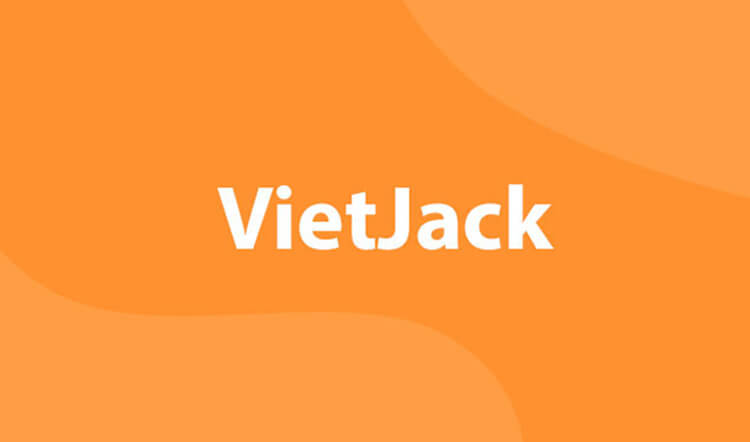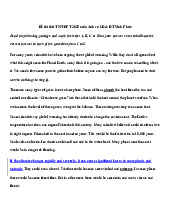



















Preview text:
Đề thi thử tốt nghiệp THPT Quốc gia môn tiếng Anh 2025 sở GD&ĐT Hải Phòng có đáp án
Read the following passage about Jackie Chan and mark the letter A, B,
C, or D on your answer sheet to indicate the option that best fits each
of the numbered blanks from 1 to 5.
Jackie Chan, a world-renowned actor, martial artist, and director, grew up in Hong Kong,
(1) ______. Born into a poor family, Jackie’s early life was difficult, and he had to work
hard from a young age to support his family. His parents could not afford to send him to
school, so he attended a Chinese opera school, where he trained in martial arts and acrobatics. (2) ______.
At the age of 17, Jackie moved to the United States to pursue a career in Hollywood. (3)
______, Jackie kept working hard and refused to return to Hong Kong. (4) ______.
Jackie learned from his colleagues and continued improving his skills, determined to
succeed. His big break came with the movie Drunken Master in 1978, which made him a superstar in Asia.
Having gained recognition in Asia, Jackie eventually became a global star, starring in
many successful Hollywood films such as Rush Hour and Shanghai Noon. His hard work,
perseverance, and unique blend of martial arts and comedy made him one of the most
beloved action stars in the world. Today, Jackie Chan is admired not only for his success in film (5) ______. Question 1.
A. being faced with some scandals in the early stage of his career
B. where he faced many challenges before achieving fame
C. that brought him numerous obstacles in his way to success
D. a country with several difficulties following him Question 2.
A. Spending hours everyday to learn new skills, while he was often injured in his intense
training, he couldn’t give up
B. Spending hours every day learning new skills, he was often injured during his intense training, but he never gave up
C. Spending hours every day learning any new skills, in spite of often being injured in his intense training, he gave up
D. Spending hours everyday learning new skills, often being injured during his intense training, but never giving up Question 3.
A. Consequently, he struggled with a language barrier to play a role in a movie
B. Due to the struggle in getting roles in film, together with a language barrier
C. Despite facing a language barrier and struggling to get roles in films
D. In case he had a serious language barrier in getting roles in films Question 4.
A. Taking small roles in movies, he has been performing his own stunts
B. Small roles in movies that he took had prevented him from performing his own stunts
C. He took small roles in movies, often performing his own stunts
D. His own stunts are the result of his taking small roles in movies Question 5.
A. but he also is highly appreciated due to his dedication to charity
B. and the efforts and dedication that he has when he assists the less fortunate
C. but also for his dedication to charity and his efforts to help the less fortunate
D. and he has been so dedicated to help the less fortunate by doing charity work
Read the following passage about AI in protecting birds and mark the
letter A, B, C, or D on your answer sheet to indicate the option that
best answers to each of the following questions from 6 to 15.
How AI is Assisting Scientists in Protecting Birds
As bird populations continue to deteriorate globally, scientists and birders are using
algorithm-powered apps to gather valuable data about avian species. These capture
millions of hours of audio. [I]. Yet, it’s a lot of recordings for a human to sift through.
To process this deluge of data, scientists just need a little help from BirdNET, an AI-
powered system launched in 2018 that can identify more than 6,000 species of birds
across the globe just by their calls. The technology functions by converting bird calls into
spectrograms, soundwave images that the app’s algorithm analyzes. [II]. Since its launch,
BirdNET has amassed over 150 million bird sounds, contributing to large-scale
conservation projects. BirdNET is not alone—other applications, such as Merlin, also
leverage AI to assist scientists and birders in identifying bird calls. These systems enable
scientists to process vast quantities of acoustic data, which is crucial for bird conservation.
However, like most AI-based technology, these apps are not without pitfalls. In his 2023
study in the International Journal of Avian Science, ecologist Cristian Pérez-Granados
reviewed a range of scientific literature on BirdNET. His research found that BirdNET
didn't always register a bird's song, and sometimes misidentified it as another species,
which results in " false positives ," says Pérez-Granados, who works at the University
of Alicante in Spain. [III]. Merlin users have also reported cases of misidentification,
which could have negative implications for research projects that incorporate citizen science data.
In spite of these challenges, AI-powered tools have made birdwatching more accessible,
even to those with hearing impairments, encouraging broader participation in
conservation efforts. [IV]. In fact, it’s a case of "killing two birds with one
stone"—AI is not only assisting in tracking bird populations, but it is
also making birdwatching more inclusive for everyone.
Question 6. Where in the passage does the following sentence fit? The system detects
unique patterns, such as frequency changes, timing, and amplitude, which are far more
precise than what humans could discern. A. [III] B. [I] C. [IV] D. [II]
Question 7. The word “These” in paragraph 1 refers to ______. A. bird populations B. avian species C. algorithm-powered apps D. scientists and birders
Question 8. What can be inferred about the importance of spectrograms in BirdNET’s identification process?
A. Spectrograms serve as visual maps that match bird sounds to specific geographic locations.
B. Spectrograms are stored in a public database to help birdwatchers.
C. Spectrograms help filter background noise so that users can hear birds more clearly.
D. Spectrograms allow AI to analyze sound features that are difficult for humans to detect.
Question 9. Why might the passage mention hearing impairments in the context of birdwatching?
A. To highlight how AI has expanded participation in conservation by making birdwatching more inclusive
B. To emphasize that AI tools have eliminated the need for auditory skill in bird
identification and conservation
C. To illustrate how AI can detect bird calls even when humans cannot physically hear them
D. To criticize the inaccessibility of traditional birding tools for those with disabilities
Question 10. What does the word “deluge” in paragraph 2 most likely mean?
A. A slow and steady accumulation of information over time
B. A flood of data too overwhelming for manual processing
C. A summary of bird calls compiled from many different species
D. A storage system used to archive bird recordings for future study
Question 11. In the passage, what does the term “false positives” most likely refer to?
A. Successful identifications that occur despite deafening background noise
B. Recordings of bird calls that are ignored because they come from different species
C. Cases in which two similar bird calls are detected simultaneously
D. Instances where the system identifies a bird call incorrectly
Question 12. The word “incorporate” in paragraph 3 is OPPOSITE in meaning to ______. A. exclude B. specialize C. collaborate D. imply
Question 13. Which of the following best paraphrases the underlined sentence in the last paragraph?
A. AI applications are enhancing conservation by tracking bird populations, but they
have no effect on making birdwatching more accessible to the general public.
B. The only role of AI in birdwatching is to improve data accuracy, with little attention
given to increasing the accessibility of the activity to the public.
C. AI technology simultaneously advances avian population monitoring and promotes
greater inclusivity in birdwatching by broadening public access to participation.
D. AI tools aim to improve both bird population monitoring and public engagement, but
their dual impact is often understated, especially in illegal bird hunting.
Question 14. In which paragraph does the writer mention the working mechanism of BirdNet? A. Paragraph 2 B. Paragraph 3 C. Paragraph 1 D. Paragraph 4
Question 15. Which of the following best summarizes the passage?
A. AI-powered systems are transforming avian research by enabling large-scale, precise
analysis of bioacoustic data critical to global bird conservation, despite limitations in
species identification accuracy.
B. AI technologies are reshaping birdwatching by enhancing species recognition for the
general public, although they offer limited value for scientific research and large-scale conservation efforts.
C. Tools like BirdNET and Merlin assist citizen scientists in identifying bird calls and
broadening participation, though their effectiveness in rigorous data analysis is still being questioned by researchers.
D. While AI apps have made bird identification more accessible to hobbyists and those
with impairments, their current inability to consistently detect species limits their
application in conservation science.
Read the following passage about bonsai and mark the letter A, B, C,
or D on your answer sheet to indicate the option that best answers to
each of the following questions from 16 to 23.
Language plays a crucial role in shaping identities and cultures around the world. The
term “minority language” enjoys a natural, but problematic, definition .
In the most straightforward sense, a minority language is simply one spoken by less than
50 percent of a population in a given region, state or country. The key criterion here is the
size of the speaker population within a specific geographic context: an individual
language may be a minority language in one region or state but a majority language in
another. Such is the case with many immigrant languages, whose speakers may continue
to be a majority in the homeland but have smaller speaker bases elsewhere.
Furthermore, a single language may have different degrees of minority status within a
given country. To cite one of the most obvious examples, Spanish is a majority language
in a number of countries but a minority language in the United States overall. At the same
time, in US states, counties, or regions with large Latino populations it is much more
prevalent and even valued, and is indeed spoken by a majority of the population in some
counties in Texas and New Mexico. This example highlights the most problematic part of
the definition given above; namely, that it makes no claim about the economic, social, or
political prestige of a minority language. In many of France’s former colonies, French is
a minority language, as is Ainu in Japan, but the former is frequently associated with
education and economic advancement, whereas the latter is stigmatized and subject to discrimination.
Given such differences, it may make good sense to distinguish between indigenous,
immigrant, and ethnic linguistic minorities, and to characterize minority languages in
terms of their social and economic functions.
Question 16. Which best paraphrases the underlined sentence in paragraph 1?
A. The term "minority language" is widely accepted but has limitations in its definition.
B. Defining minority languages is straightforward and has few complications.
C. The term "minority language" is always defined based on the size of the population.
D. The definition of a minority language is universally agreed upon and simple.
Question 17. Why is the definition of “minority language” considered problematic in the passage?
A. It places too much focus on the number of speakers in urban areas.
B. It assumes that all languages spoken by small populations are inferior.
C. It overlooks the social, political, or economic prestige of the language.
D. It ignores the role of indigenous languages in cultural identity.
Question 18. The word “specific” in paragraph 2 is CLOSEST in meaning to ______. A. general B. circular C. particular D. special
Question 19. What distinction does the passage suggest for better understanding minority languages?
A. Between indigenous, immigrant, and ethnic linguistic minorities
B. Between the languages of large countries and small states
C. Between formal and informal language usage in societies
D. Between languages spoken in urban versus rural areas
Question 20. The phrase “subject to” in paragraph 3 could be best replaced by ______. A. independent of B. indifferent to C. vulnerable to D. exempt from
Question 21. The word “their” in paragraph 4 refers to ______. A. differences B. functions C. linguistic minorities D. minority languages
Question 22. In which paragraph does the writer mention the example of Spanish being a
minority language in the United States? A. Paragraph 2 B. Paragraph 3 C. Paragraph 1 D. Paragraph 4
Question 23. What is the best title for the passage?
A. The History of Immigrant Languages in the United States
B. Rethinking Minority Languages: Social, Economic, and Political Dimensions
C. The Positive Impact of Economic Prestige on Language and Political Status
D. The Struggle for Minority Language Preservation in Spain
Read the following advertisement and mark the letter A, B, C, or D on
your answer sheet to indicate the option that best fits each of the
numbered blanks from 24 to 29.
ESCAPE TO PARADISE AT THE OASIS RESORT
"Are you looking for a peaceful retreat where you can relax and recharge? The Oasis
Resort offers you (24) ______ unique experience, combining luxury, comfort, and
adventure. Situated in a picturesque location, the resort provides a range of activities
designed (25) ______ everyone’s needs.
Whether you are enjoying the beach, participating in an exciting water sport, (26) ______
simply lounging by the pool, you will find something for everyone here. By doing yoga
in the tranquil gardens or having a spa treatment, you can unwind and rejuvenate (27)
______ body and mind. After a day of (28) ______, the gourmet restaurant offers
delicious meals, prepared with fresh, locally-sourced ingredients.
At the Oasis Resort, every detail (29) ______ care of. From the moment you arrive, our
staff ensures you have everything you need for an unforgettable stay. It is said that guests
leave feeling renewed and ready to take on the world.
Book a stay today and experience paradise like never before at the Oasis Resort, where comfort meets adventure."
Question 24. A. ø (no article) B. the C. a D. an Question 25. A. to suiting B. suited C. suiting D. to suit Question 26. A. nor B. and C. yet D. or Question 27. A. their B. my C. his D. your Question 28. A. entertainment B. travel C. relaxation D. effort Question 29. A. take B. takes C. are taken D. is taken
Mark the letter A, B, C or D on your answer sheet to indicate the best
arrangement of sentences to make a meaningful exchange or text in
each of the following questions from 30 to 34. Question 30.
a. While urbanization brings economic growth and improved infrastructure, it also
presents challenges such as traffic congestion and pollution.
b. The rapid development of cities attracts people from rural areas seeking better job
opportunities and higher living standards.
c. Indeed, over the past few decades, urban expansion has transformed many small towns
into bustling metropolitan areas.
d. My interest in urban planning and sustainable development has led me to explore ways to create more livable cities.
e. In conclusion, although urbanization offers many benefits, it is crucial to balance
growth with sustainability to ensure a better quality of life for future generations. A. d – b – a – c – e B. c – b – a – e – d C. b – c – a – d – e D. d – c – b – a – e Question 31. Hi Jack, How are you? I'm doing well.
a. Have to go now. We're having a barbecue in the garden.
b. I make my bed every day and clean my room twice a week. Dusting the furniture at weekends is also my duty.
c. Thanks for the email. I'm sorry to hear that you're so busy with your studies and have too many chores to do.
d. I am very busy with school and other activities, but I help my parents with the housework sometimes.
e. These simple actions make my parents so happy and I am so proud of that. Talk to you soon! Best, Ryan A. e – b – d – a – c B. e – a – c – d – b C. c – d – b – e – a D. c – e – a – b – d Question 32.
a. Sue: Good ideas! I’ll keep that in mind. Thanks!
b. Ben: I think we should avoid taking souvenirs like stones, and wear flat shoes with soft soles to prevent damage.
c. Sue: I visited the castle yesterday. It’s nice, but no one looks after it. What can we do to protect it? A. b – a – c B. c – b – a C. a – b – c D. b – c – a Question 33.
a. These can help them shape their personal and professional growth.
b. When taking on a part-time job, teenagers acquire valuable skills and experiences.
c. The experience allows them to make decisions about their future career paths.
d. Engaging in part-time employment can bring forth several benefits for teenagers.
e. Part-time jobs also provide opportunities for teenagers to explore their passions. A. d – b – a – e – c B. e – a – c – d – b C. b – d – e – a – c D. d – e – b – a – c Question 34.
a. Emma: It truly is. Every time I start reading it, I just can’t put it down.
b. Emma: Thank you so much for the lovely book, James.
c. James: That’s great to hear. Enjoy the book! d. Emma: Thanks again, James.
e. James: I’m glad you like it, Emma. I thought it would be perfect for you. A. e – a – c – b – d B. a – c – d – e – b C. d – e – b – c – a D. b – e – a – c – d
Read the following leaflet and mark the letter A, B, C, or D on your
answer sheet to indicate the option that best fits each of the numbered blanks from 35 to 40.
Gender Mainstreaming Platform: Empowering Equality Across Europe
Gender gaps and inequalities between women and men (35) ______ to exist in many
areas of society, including education, employment, and health. To address these
challenges, the EIGE Gender Mainstreaming Platform offers (36) ______ way for
policymakers and individuals to take action towards gender equality. What is Gender Mainstreaming?
Gender mainstreaming involves the (37) ______ of a gender-sensitive approach into
every phase of the policy-making process.
What can you find on the platform?
Information on many different policy areas, highlighting (38) ______ and ongoing efforts in various countries. How does it work?
Gender mainstreaming can be described as a cycle that begins with the defining and (39)
______ phases and continues through implementation and evaluation. At each phase of
the cycle, it is essential to make sure that gender equality is taken (40) ______ account. Question 35. A. has continued B. had continued C. continue D. continued Question 36. A. another B. others C. other D. the other Question 37. A. integrated B. integration C. integrate D. integrating
Question 38. A. gender inequalities current B. gender current inequalities C. current inequalities gender D. current gender inequalities Question 39. A. planning B. assessing C. naming D. reviewing Question 40. A. on B. for C. above D. into




